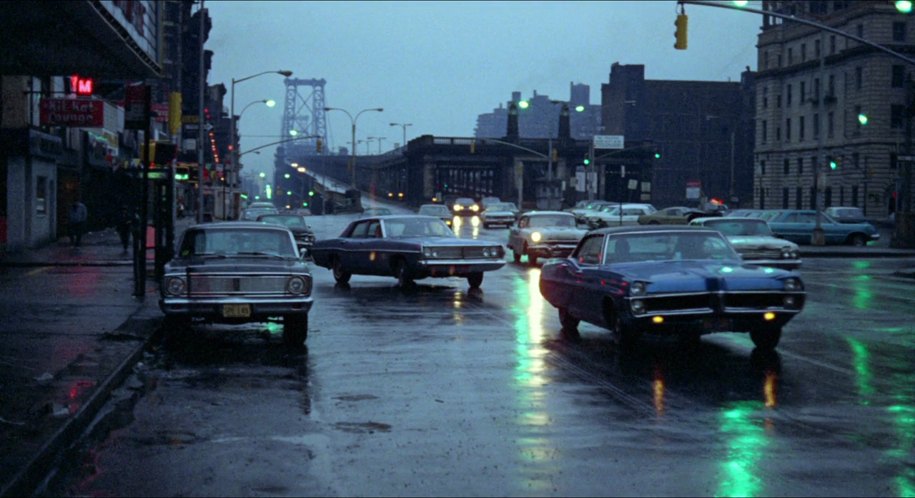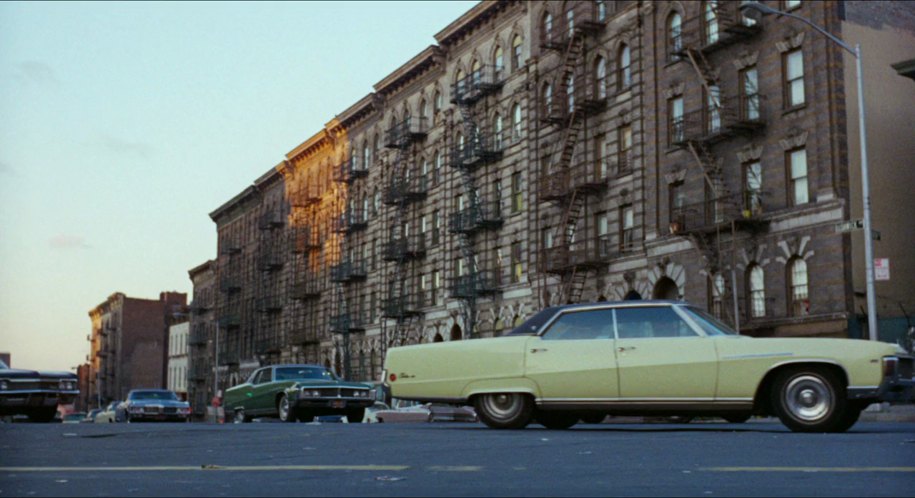This holiday season I got the opportunity to once again indulge in one of my favourite Christmas movies – The French Connection.
Okay, so it’s not a Christmas movie per se, but there is a scene of Gene Hackman beating another man while dressed as Santa. That has to count for something.
The real reason this 1971 crime drama is at the top of my must-watch list isn’t the fleeting yuletide cheer, but the simple fact it’s one of the best – and grittiest – cop movies ever filmed.
And it’s a car lover’s paradise.
With its main set piece being a grimy New York City in the cold, grey early winter, William Freidkin’s film perfectly illustrates the widespread decay of the 1970s American urban landscape.
You can feel the grittiness ooze from the screen. The raw exhaust notes emanating from the vast masses of rolling Detroit iron. The aching toes brought on by pounding the cold, cracked pavement in pursuit of ‘Frog One’. A landscape so far from the warm sun and a clean soaking of rain.
This isn’t the New York of Breakfast at Tiffany’s, it’s the New York of Death Wish and Mean Streets.
Though it was critically acclaimed – winning Oscars for best picture, actor and director – the film is, as one Guardian writer recently stated, one of the most nihilistic to ever grace the silver screen. Hell, its promotional poster features the protagonist ‘Popeye’ Doyle triumphantly shooting a man in the back.
The film’s thrilling (and nearly suicidal) chase sequence between a 1971 Pontiac Lemans and an elevated commuter train took place on an open road, with no safety precautions and real vehicular casualties.
For all of this, it’s a certified a classic. A raw filmmaker’s film. And for a car lover, a treasure trove.
The rolling centerpiece is a 1970 Lincoln Continental Mk. III, a vehicle imported from France and shared between the characters of Alain Charnier, a well-to-do Frenchman with sketchy allegiances, and Henri Devereaux, an erudite French actor.
Despite being that perfect ’70s colour (dark brown), the Continental shines. The model reeks of class and distinction, its luxury contrasted by the unsavory backdrops through which it travels.
Of course, this would be the last decade that the Lincoln brand would be looked on as the pinnacle of American motoring luxury, and the Mk. III can arguably be seen as the last ‘great’ Lincoln.
In many ways, the car was metaphorically catching up to its movie surroundings.
Gene Hackman’s ‘Popeye’ character gets no such luxury, however. His ride is a bare-bones 1968 Ford Custom, and his lifestyle as a hard-drinking narcotics officer is best summed up by the scene in which ‘Frog One’ and Frog Two’ are gorging themselves in a perversely luxurious a la carte restaurant, while he eats coffee and cold pizza on the frigid sidewalk outside.
Because so much of the action takes place on the street, where a vice cop is normally going to find himself, the audience gets a huge dose of early 70s rolling stock.
In pre-Oil Crisis America, the Big Three ruled the roadways. You’d be hard pressed to even spot a Volkwagen in this flick.
And don’t the vehicles seem indestructible? What is it about that era of cars that makes it seem an average sedan could jump from an overpass and still make it okay, just a little bit banged up?
Certainly, Doyle’s appropriated LeMans takes more than a few wrecking yard-worthy hits in its pursuit of the train, while still staying in the game. It’s a sequence that makes you realize modern car chases are terribly boring. Exploding plastic fascias and deploying airbags do not a good car chase make…
Because it’s a well-formulated detective movie, The French Connection builds slowly as the connections are realized. It’s so very, very worth it, yet I fear many people might overlook this film. And by ‘people’, I mean those of the Millennial generation, who generally believe that any movie worth making should have been made after 1995.
If you’re into films and into cars – or even just one of the two – you need to devote time to watching this movie.






![i525513[1]](https://driventoattraction.com/wp-content/uploads/2015/12/i5255131-1.jpg)
![i098798[1]](https://driventoattraction.com/wp-content/uploads/2015/12/i0987981.jpg)
![i098903[1]](https://driventoattraction.com/wp-content/uploads/2015/12/i0989031.jpg)